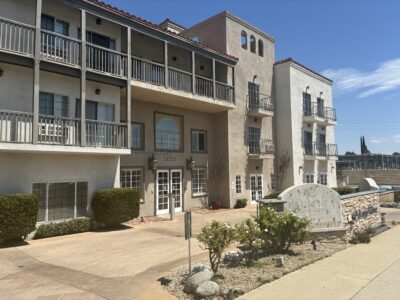The Valley Industry Association hosted a Friday afternoon luncheon at College of the Canyons in Valencia called “Workplace Safety: Protecting People, Preventing Risks.” Panelists spoke about their individual agencies and their approaches to workplace safety, how others might better prepare themselves and their workplaces for emergencies, and about broader emergency preparedness in the area.
The event, moderated by Ed Masterson, included panelists Pat Sprengel, assistant fire chief of the Los Angeles County Fire Department; Masis Hagobian, intergovernmental relations officer for the city of Santa Clarita; Carissa Bortugno, vice president of clinical support services at Henry Mayo Newhall Hospital; and Sgt. Johnny Gillespie of the Santa Clarita Valley Sheriff’s Station.
Bortugno began by highlighting Henry Mayo’s efforts in patient safety and disaster management.
“Over the last couple of years,” she said, “there’s been a lot of issues with patients and violence against caregivers. So, that’s something that we have had to address full force.”

She added that the hospital is assembling a task force to address the growing concern.
As the discussion focused on disasters in the community, Bortugno pointed out that Henry Mayo is a Los Angeles County designated disaster resource center, one of only 13 hospitals in the county. It includes a trauma center, which, she said, is one of 10 in the county.
Hagobian emphasized the city of Santa Clarita’s emergency preparedness, including active shooter training and panic buttons. With almost 500 city staff members, training is an important part of ensuring that workplace safety is maintained.
“We incorporate — as part of a new hire orientation — different types of emergency and workplace safety trainings, everything from active shooter to using first aid kits, trauma kids,” he said. “For those who are assigned as a response team member in a respective division with the city, you may be responsible to conduct CPR or use a fire extinguisher for a small fire that’s at a city facility.”

Hagobian added that the city has installed panic buttons in all city facilities to be used in emergencies. City Hall alone, he said, has over a dozen buttons.
Gillespie discussed the Sheriff’s Department’s training programs, including active shooter response.
“Even though we still do patrol on a daily basis, there’s still a lot of training that’s required throughout the department for us to do, whether it be CPR, first aid, along with our shooting qualifications, and then also active shooter training,” he said. “That’s a huge part of what we do in this community — especially for this community, considering what happened here — because that’s something we don’t ever want to happen again.”

Sprengel detailed L.A. County Fire’s response to wildland fires and the importance of community readiness. But he broke down the variety of work they get in the community.
“I would say 85% of our call volume is typical medical runs — EMS runs, paramedic calls, what have you,” he said. “And then that other 15% is stuff that myself, as a supervisor there, are concerned about.”
That 15% he mentioned includes calls about fires, hazardous materials, urban search and rescue, and civil disturbances. Many of these kinds of emergencies, he said, require good working partnerships with other agencies and organizations.
Sprengel spoke about a unified command during larger emergency situations in the community, in which agencies like fire departments, law enforcement and federal agencies work together at one command post to manage incidents collaboratively. This structure, he said, ensures clear communication, coordinated decision-making and a unified public message.

The panel also discussed the need for credible emergency information sources. For example, Hagobian warned people to be mindful about information coming from community members on social media. Sources like Genasys Protect and Watch Duty, he said, are good ways to be informed about fire dangers and evacuation orders.
And the panel stressed the importance of workplace safety plans that all businesses should have in place and should practice routinely.
Overall, the panelists collectively emphasized that workplace safety isn’t just about reacting to emergencies but about building a culture of preparedness, communication and collaboration across all sectors. Whether it’s health care, city government, public safety or emergency response, each organization plays a vital role in protecting people and preventing risks.
Events like Friday’s luncheon, the panel seemed to agree upon, help foster shared responsibility, empowering business leaders and community members alike to take proactive steps toward a safer Santa Clarita Valley.










